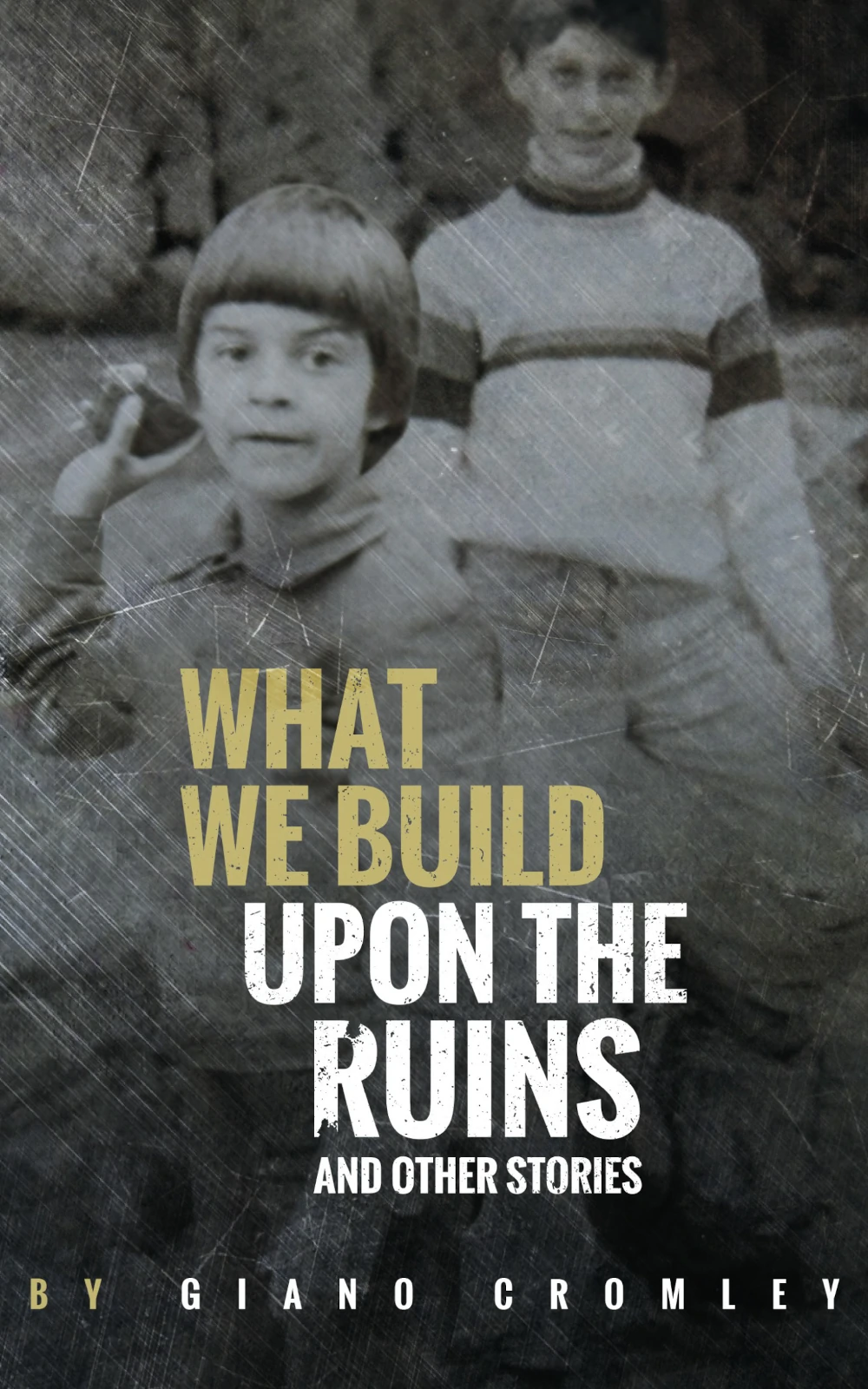
What We Build Upon the Ruins, by Giano Cromley
Words By Amanda Farbanish
We all have fought to survive love, loss, and the melancholy pit in the heart that makes each step drag. Similarly, the characters in Giano Cromley’s short story collection What We Build Upon the Ruins struggle to move through life. These eleven stories wade through the heavier haze of humanity—sifting through fractured relationships, families, and selves in order to surmise what it takes to make it to the other side.
Cromley anchors his stories in that inevitable humanness. The collection is framed by one story split into three parts, providing both a solid backbone and a family of characters to return to. This tryptic supplies the reader with a glimpse into a family grieving the loss of their daughter and sister. Told through the eyes of the eldest brother, the reader joins the family on a bonding trip where they must build a canoe by hand. The strained bonds of this family are tested as the boy wonders whether they can heal together or if they will inevitably drown.
“Coyote in the City” follows Ellis Jackson, a man who “knew he’d taken the easiest route life had offered.” Instead of pursuing a football scholarship, he chose to follow his father into the roof shilling business. But after falling on hard times, he’s forced to take a job emptying garbage for the Billings City Parks Department. When he’s partnered with an old acquaintance from high school who has been recently paroled, he’s left to question how they both ended up in the same place. What made him let go of life?
In “Those Who Trespass,” Vincent Pease, a professor at a community college does his best to sound normal while on the phone with his wife, despite finding himself wishing she wouldn’t pick up. After finding the backpack of a female student left in the men’s bathroom, he becomes obsessed with locating the owner. Will he find solace in his quest of avoidance, or will he be left unsure of what awaits him at the end?
The territory What We Build Upon the Ruins explores is not new. We have long sought to pick apart the human condition and its unsettling, often unpleasant realities. And yet the indirect way Cromley addresses these problems forces the reader to realize that they’re not easily defined. What electrifies these stories is that the friction waiting to ignite every situation is often simmering just underneath the surface.
Rarely is a character’s turmoil neatly spelled out for the reader. Inner stresses and anxieties are displaced, bleeding through the characters’ thoughts and behaviors. It’s messy and it’s raw and it’s endlessly obscured by inner emotions clashing against outer responsibilities—and that’s what makes it infinitely more real. A city park worker can question his decisions in life as he works alongside a man on parole. A professor can repress feelings about his static relationship through his adventure to return a backpack. And a family can find solace as they build a canoe.
While Cromley’s writing style might at first seem simplistic, it’s this rich, underlying emotional world created through painfully relatable characters that makes these stories thrive. Moments of confusion and unrest are mingled with occasional spaces to breathe. Though it can be difficult to push your way forward, the only way to get by is to do it one moment at a time.